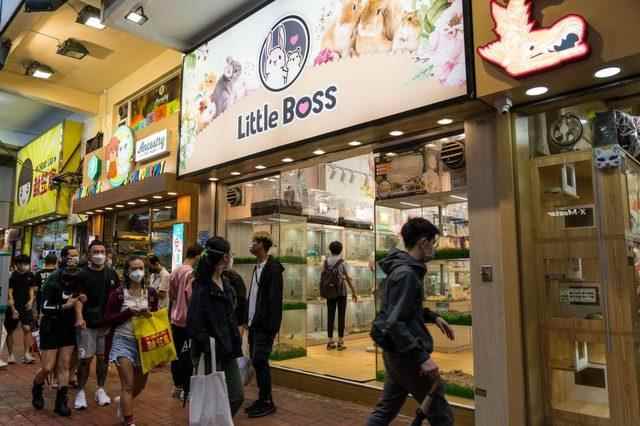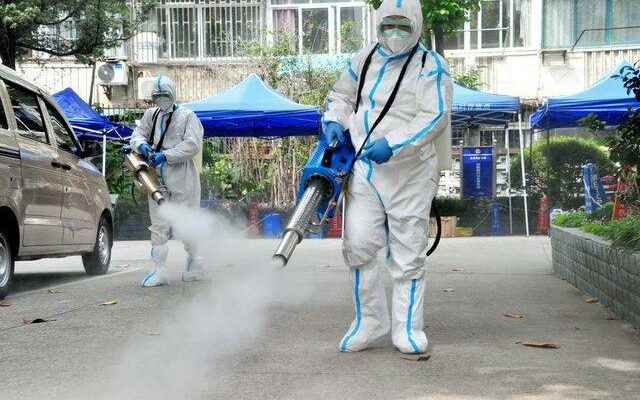It took more than a month, but the administrators of Shanghai, China, now think that the Covid epidemic in the city is almost under control.
So they ordered a big clean up. An army of people is disinfecting thousands of apartments and residential areas in an attempt to end the virus.
China’s financial capital will then come out before it shuts down, but it will be gradual, sensitive, cautious.
The relentless “war” against Omicron left a scarred city behind. People who tested positive and were over 100 years old were taken to quarantine centers. There were very few exceptions to this.
During the five weeks that I was closed, I could not go beyond the door of the apartment where I lived. The worst affected were the vulnerable people of Shanghai.
A man named Wu shared what he saw on Douyin, known outside of China as TikTok. “We don’t have enough medical supplies right now, patients can’t be treated in hospitals like they used to in normal days,” he says.
At one point he saw an 85-year-old woman who fell ill. She was brought back to life by emergency response.
We’ve heard scary stories from the family of a 90-year-old woman who was taken away after she tested positive. Authorities insisted that the woman be taken to a quarantine centre.
The family, who did not want to be named, were worried that the woman could not eat alone and go to the toilet. Her bedridden husband, in his 90s, was given leave to stay at home.
Others spoke of the harsh conditions faced by those who were sick at the beginning of this great Covid-19 wave in hospitals. Last month, we covered the patients who died after testing positive for Covid at Donghai Elderly Care Hospital. This incident took place when the official death toll in the city was still zero.
One man described the death of his 90-year-old sister, who shared a room with five other people. Later, he contacted us again and informed us that the other four people in the room had died.
We saw phone messages from a nurse saying “many people died in intensive care, but we don’t know the exact number”.
Currently, the official death toll as of May 4 is 491. Almost all of them are elderly unvaccinated. Only 38 percent of those over 60 in Shanghai have full protection with three vaccines.
Some regions have announced that they will take action to increase this rate in the first month of the shutdown.
Chinese leaders, on the other hand, insist that the “zero Covid” policy is still the right thing to do. Chinese leader Xi Jinping has made it clear that the policy will not change. He believes that “insistence will bring victory”.
This will now be a test for China’s way of fighting the coronavirus. Also for Xi’s credibility.
But the language of struggle has changed. While the state-controlled media described the shutdown as “static rule”, the government was forced to change its target to “social zero”. This means no new positive cases outside the controlled quarantine zones.
This target is close. New cases recorded are declining, but still far from “zero”.

The measures were applied harshly at times.
Some people were imprisoned in their homes, while others were forcibly removed. Communities, including mine, were separated by barriers. Green barriers appeared in many parts of the city.
It is not allowed to oppose the measures or focus on the shortcomings.
A man was questioned by police simply for showing a shopping bag to someone filming with his phone. According to the seal on it, the pork in the bag was donated from a neighboring region. This rule violation highlights food supply problems.
A few days ago, small-scale actions in parts of Shanghai were swiftly condemned. In some places, there were protesters by hitting the pots. Officials said they were influenced by “external forces”.
But part of China changed tactics.
There were harsh restrictions in Hong Kong. It was closed to the rest of the world for a period, but Hong Kong itself had no lockdown measures. Then there was the Omicron wave.
Hong Kong had the world’s highest weekly death rate at that time.
Professor Ben Cowling of the University of Hong Kong said he estimates 60 percent of the population is affected, and there is now herd immunity to the BA2 variant.
Although Cowling also states that he is worried about waves of new variants, after the city’s recent outbreak, he says, “I don’t think it will have a big impact,” and adds:
“My concern in Shanghai is how long this can go on.”
The professor says the number of cases recorded will “slow down” but “if there is another Omicron outbreak, it could all happen again in a month, two or three months.”

The topics of herd immunity or “living with Covid” are not discussed in mainland China. The focus is on winning the “final fight” of Chinese leader Xi.
This is a fight against the virus, which China officially declared victory in the summer of 2020.
But Xi is determined to win the battle as the Communist Party Congress, which he hopes to be inaugurated for a third time in October, approaches.
The capital, Beijing, is trying to stop the spread of the virus, and many residents are being tested over and over again.
Defending the capital against the virus is very important to the Communist Party.
For almost two years, most of China has been without the virus, and this is still the case.
However, with the Omicron threat, concerns have risen again. Still critical to global growth and supply chains, the already fragile economy is coming under increasing pressure.
It may become increasingly difficult for “zero Covid” to justify the shutdowns.
